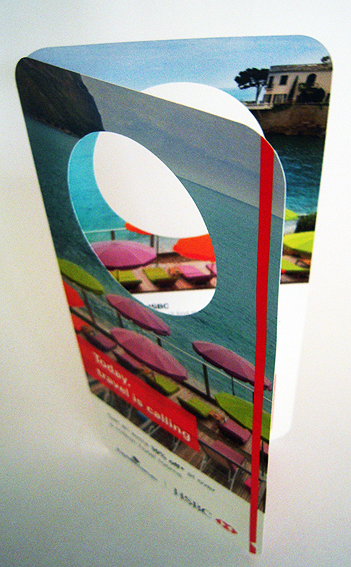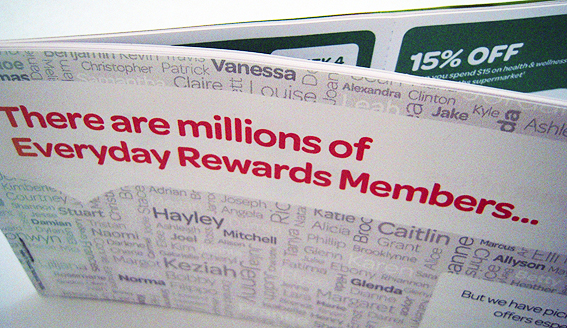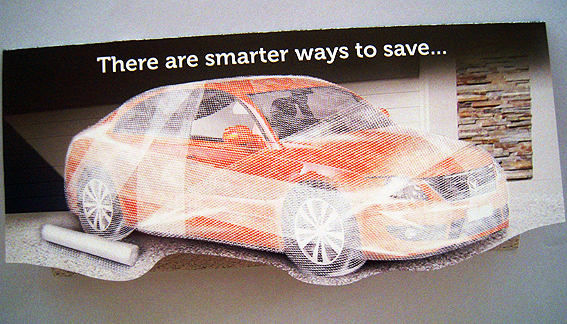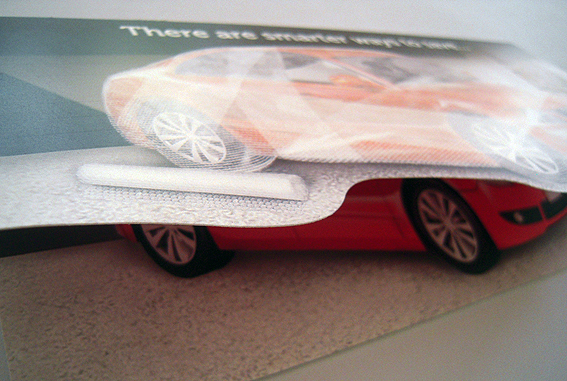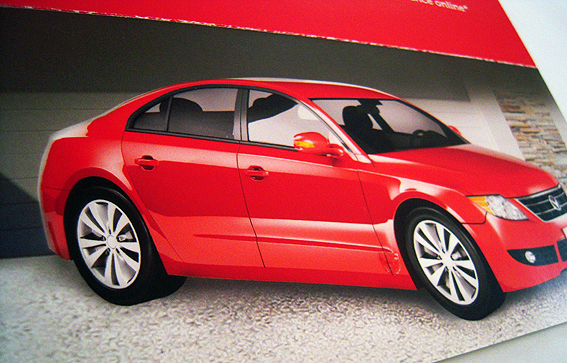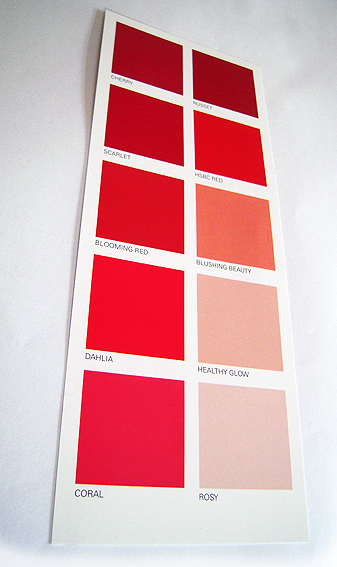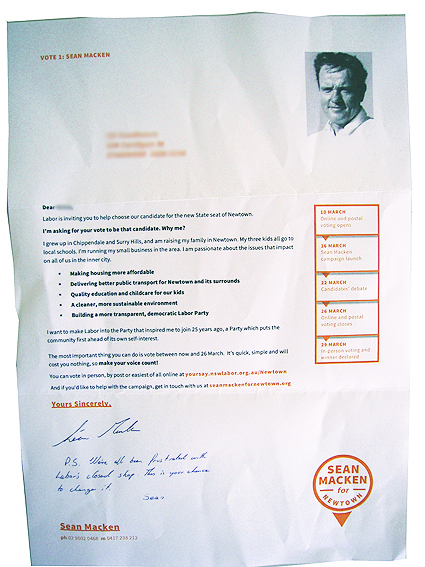Ha, well would you believe it?
Having mentioned previously how rare door hangers have become recently, it was perhaps inevitable that another would turn up soon afterwards.
This one comes from a bank in association with an online travel company to promote discounted hotel rooms. At least the connection is more obvious here – hotel rooms – do not disturb – please make up my room etc – so using a door hanger as a piece of direct mail makes more sense here even though it will probably never be used as a door hanger. Nor for any other purpose, for that matter.
It’s not hard to create a door hanger – just a simple die-cut and, in this case, a fold too – but, you know, if you’re going to do it then perhaps it might be fun to make something of it, be a little creative in terms of playing with the fact that it is a door hanger and it’s promoting hotels and, gee, wouldn’t it be nice to go to a fab hotel, kick back, raid the bar fridge, hang up the Do Not Disturb notice – and get 10% OFF AT THE SAME TIME.
Or don’t. Instead just create a door hanger and simply ignore the fact that it is a door hanger, leaving it up to the poor old punter to make the connection between door hangers and hotels because they’re really good at doing that sort of stuff.
Yeah, that’ll work.

